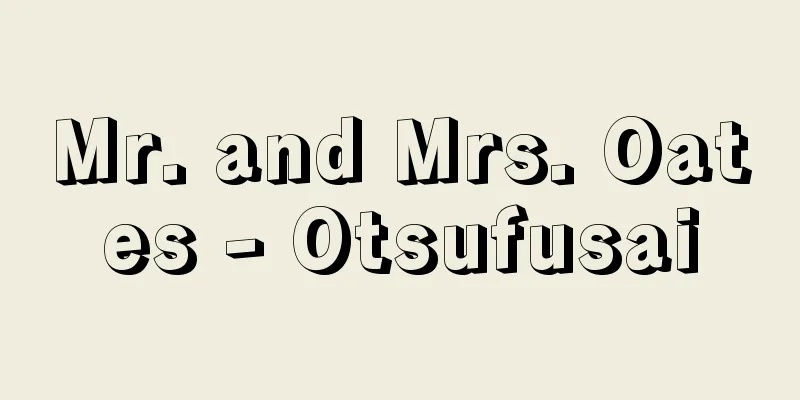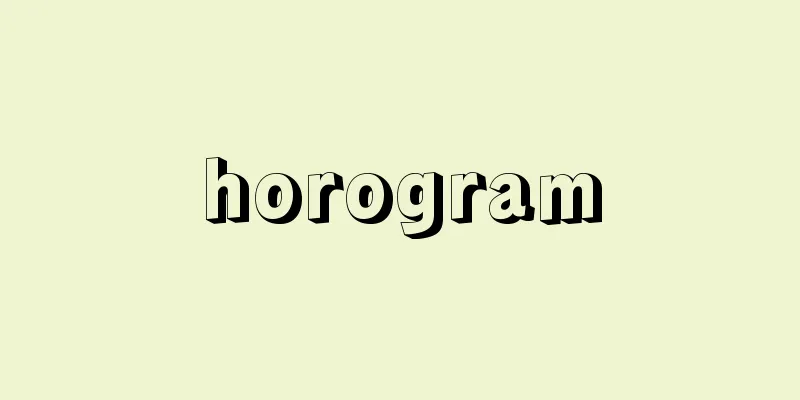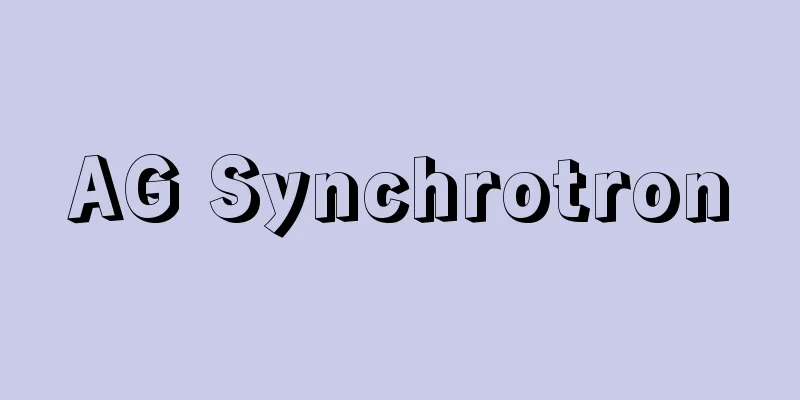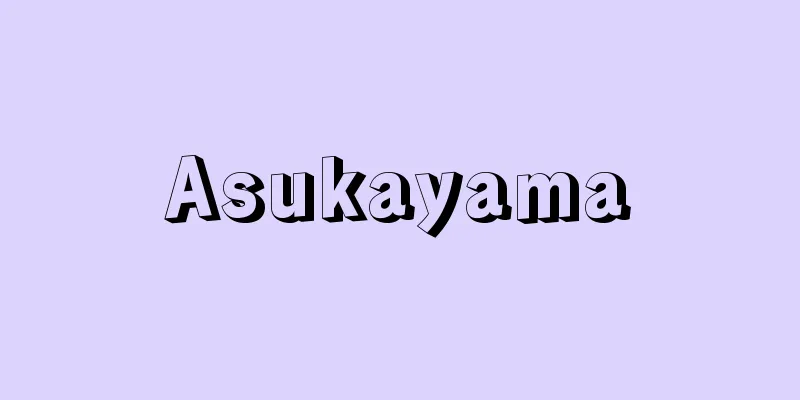Real number - jissuu (English spelling) real number
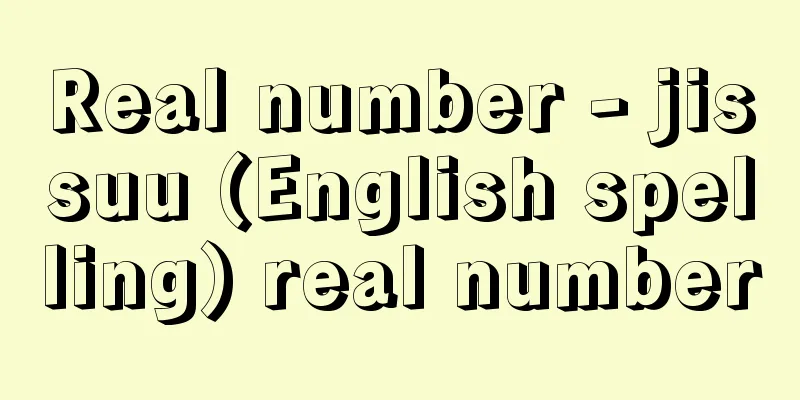
|
Rational numbers and irrational numbers are collectively called real numbers. Rational numbers include natural numbers (positive integers), 0, and negative integers. Serious research into what real numbers are and what properties they have was undertaken in the mid-19th century by Weierstrass, Dedekind, Melee, and Cantor, one after another. [Osamu Takenouchi] Changes in the concept of real numbersIn ancient Greece, the main consideration was when two quantities were integer multiples of another quantity, and when they were not, they were considered incommensurable and avoided. Later, the general idea of a number, including incommensurable quantities, was adopted, being the ratio of the lengths of two line segments. The decimal notation system was created in India and Arabia, and was imported to Europe around the 12th century, but it was used to represent integers. Today's decimal notation was invented by Stevin in the mid-16th century. It is believed that the discovery of this notation led to the concept of infinite decimals. In the first half of the 17th century, Descartes established a one-to-one correspondence between numbers and points on a line by assigning a point O and a unit point E to a line, and measuring the length using OE as a unit. In 1830, Cauchy stated that if a sequence of numbers a 1 , a 2 , … converges to a certain limit value, then the difference between the terms | a n - a m | can become as small as n and m become large, and conversely, he asserted that a sequence with such a property converges. If it had been constructed strictly axiomatically from this starting point, it would have come closer to the modern concept of real numbers, but Cauchy merely asserted this. Bolzano also developed a discussion on the recognition of real numbers in a book of 1851. [Osamu Takenouchi] Establishment of the concept of real numbersIn 1872, Dedekind developed a theory of creating real numbers starting from rational numbers. He focused on the correspondence between points on a line and numbers, and thought that a line would be the essence of real numbers because no matter where you cut it, it will be in the same state (one half line has an end point and the other does not). He also said that rational numbers alone do not end up in the same state when cut at a certain point, so it is appropriate to understand this cutting itself as the essence of real numbers. He went on to elaborate as follows: Now, let us divide Q , the whole of rational numbers, into two sets, A and B , as follows: (1) A and B have no common elements. Putting the two together makes up the whole of Q. (2) If we take the number a that belongs to A and the number b that belongs to B , then a < b is always true. In this case, this set of A and B is called a section of rational numbers, and we denote this by ( A - B ). A is called the lower set of this section, and B is called the upper set. At this point, the following three cases arise: [1] A has a maximum number and B has no minimum number. [2] A does not have a maximum number, and B has a minimum number. [3] A has no maximum number, and B has no minimum number. In the first and second cases, if the maximum number of A or the minimum number of B corresponds to this section, it can be seen as representing a rational number. In the third case, it can be thought of as corresponding to an irrational number. Dedekind believed that by considering the entire section in this way and defining the operations between them, it is possible to grasp it as a system of real numbers. In a book written in 1869, Melee, and in a paper written in 1872, Cantor developed a theory of real numbers that inherited Cauchy's position. In other words, when a sequence of numbers a 1 , a 2 ,…… has the properties already mentioned by Cauchy, it is called a fundamental sequence or Cauchy sequence. When considered within the range of rational numbers, a fundamental sequence does not necessarily converge. Therefore, we consider a fundamental sequence made up of rational numbers, and think that this sequence itself determines a number. For two fundamental sequences a 1 , a 2 ,……, a 1 ', a 2 ',……, In 1899, while studying the foundations of geometry, Hilbert considered the axiomatic construction of the system of real numbers. He gave general properties related to the four arithmetic operations, general properties related to magnitude, and Archimedes' axioms (for any positive numbers α and β, if α is added successively, it will eventually become larger than β), and he said that among such systems, the system of real numbers is one that cannot be made larger. This property of not being able to be made larger is called completeness, which means, for example, that (1) a cut always has a maximum number in the lower set or a minimum number in the upper set; (2) a fundamental sequence always converges; and (3) an upper bounded set always has a minimum upper bound, i.e., an upper limit. In this way, he said that real numbers can be understood from an axiomatic standpoint. Hilbert founded the foundations of mathematics with the goal of providing a rigorous foundation for the mathematical system, and one of his major goals was to provide a clear foundation for the system of real numbers. This remains a major problem for the future. Cantor, the founder of set theory, believed that the next largest cardinal number after the countable cardinal number ℵ0 (read as aleph-zero) in the order of cardinal size would be the cardinal number of real numbers. This is called the continuum hypothesis. This has been a major problem since Cantor, but in recent years it has been discovered that the continuum hypothesis is independent of the axioms of traditional set theory. [Osamu Takenouchi] "Sets and Topologies" by Osamu Takenouchi (1970, Chikuma Shobo) "The Concept of Numbers" by Teiji Takagi (1949, Iwanami Shoten) [Reference] |Source: Shogakukan Encyclopedia Nipponica About Encyclopedia Nipponica Information | Legend |
|
有理数と無理数をあわせて実数という。有理数には、自然数(正の整数)、0、負の整数が含まれる。実数とはなんであるか、それがどのような性質をもつかについての本格的研究は、19世紀中ごろからワイアシュトラース、デーデキント、メレー、カントルによって相次いで展開された。 [竹之内脩] 実数概念の変遷古代ギリシアでは、二つの量がともにある別の量の整数倍となっている場合をおもに考え、そうでない場合は不通約量として敬遠した。その後、不通約量も含めて一般に数とは、二つの線分の長さの比のことであるという考え方がとられた。十進記数法は、インド、アラビアにおいてつくられ、12世紀ごろからヨーロッパに輸入されたが、それは整数を表すためのものであった。今日の小数記法が考案されたのは16世紀なかば、ステビンによってであった。この記法の発見により、その後、無限小数という概念が生じたことと思われる。17世紀前半、デカルトは、直線に1点Oと単位点Eを与え、OEを単位として長さを測ることにより、数と直線上の点の1対1の対応関係を確立した。 コーシーは、1830年、数列a1, a2,……がある極限値に収束するならば、互いの項の差|an-am|は、n、mが大きくなっていくときいくらでも小さくなることを述べ、逆に、そのような性質をもった数列は収束することを主張した。これを出発点として厳密に公理的に構成したならば、現代的な意味での実数概念に接近したであろうが、コーシーは単にこれを主張したにとどまった。ボルツァーノも1851年の書物のなかで実数の認識に関する議論を展開している。 [竹之内脩] 実数概念の確立デーデキントは1872年に、有理数から出発して実数をつくりあげる議論を展開した。彼は、直線上の点と数との間の対応に注目し、直線は、それをどの点で切っても同じ状態(いずれか一方の半直線は端点をもち他方にはない)になるので、それが実数の本質だと考えた。そして有理数だけでは、それをあるところで切断するとき、同じ状態にならないので、むしろこの切断自体を実数の本質と把握するのが妥当であるとした。詳しく述べると次のようである。 いま、有理数の全体Qを、次のような二つの集合A、Bに分割する。(1)A、Bは共通な要素をもたない。そして両方をあわせるとQ全体になる。(2)Aに属する数a、Bに属する数bをとると、いつでもa<bである。このとき、このA、Bの組みを一つの有理数の切断といい、これを(A-B)で表す。そして、Aをこの切断の下組、Bを上組という。このとき次の三つのケースがおこる。 〔1〕Aに最大の数があり、Bには最小の数がない。 〔2〕Aには最大の数がなく、Bに最小の数がある。 〔3〕Aには最大の数がなく、Bには最小の数がない。 第一、第二のケースでは、Aの最大数、あるいはBの最小数がこの切断に対応するとすれば、これは一つの有理数を表しているものとみることができる。第三のケースは、これがちょうど無理数に対応しているものと考えられる。デーデキントは、このように切断の全体を考え、その間に演算を定めることによって、これを実数の体系として把握することができるとしたのである。 メレーは1869年に著した書物のなかで、カントルは1872年の論文で、コーシーの立場を継承した実数論を展開した。すなわち、数列a1, a2,……は、既述のコーシーのいう性質をもつとき、基本列あるいはコーシー列という。有理数の範囲で考えると、基本列は収束するとは限らない。そこで、有理数からなる基本列を考え、この列そのものが一つの数を定めると考える。二つの基本列a1, a2,……, a1′, a2′,……に対して、 ヒルベルトは1899年、幾何学基礎論を研究した際、実数の体系の公理的構成を考えた。それは四則演算に関する一般的性質、大小に関する一般的な性質と、アルキメデスの公理(任意の正の数α、βをとるとき、αを次々と加えていくといつかはβより大きくなる)をあげ、このような体系のうちで、それ以上大きくできないものが実数の体系だとした。この、これ以上大きくできないという性質を完全性というが、これは、たとえば、(1)切断はつねに下組に最大数があるか、上組に最小数があるかである。(2)基本列はかならず収束する。(3)上に有界な集合は、かならず最小の上界、すなわち上限をもつ、などと同値である。そして、このようにして実数を公理論的な立場でとらえうる、としたのである。 ヒルベルトは、数学の体系の厳格な基礎づけを目標として数学基礎論を創始したが、その大きな目標の一つは、実数の体系に対して明確な基礎を与えることであった。これはまだ将来の大きな問題として残されている。集合論を創始したカントルは、基数の大きさの順序として、可算基数ℵ0(アレフ・ゼロと読む)の次の大きさの基数は、実数の基数であろうと考えた。これを連続体仮説という。これはカントル以来、大きな問題であったが、近年、この連続体仮説は従来の集合論の公理系とは独立なものであることが知られた。 [竹之内脩] 『竹之内脩著『集合・位相』(1970・筑摩書房)』▽『高木貞治著『数の概念』(1949・岩波書店)』 [参照項目] |出典 小学館 日本大百科全書(ニッポニカ)日本大百科全書(ニッポニカ)について 情報 | 凡例 |
>>: Decimal system - decimal system
Recommend
Takejiro Tokonami
A politician of the Taisho and Showa periods. Bor...
Kinobaru - Kinobaru
...It is commonly seen in the Tohoku region and s...
Kasagami no Mojiiwa - Kasagami no Mojiiwa
<br /> A rock monument in Bitchu-cho, Takaha...
Yellow cake - Yello cake
...When this solution is treated with alkali or a...
Porter, G.
…In relation to reaction kinetics, a notable adva...
Klinger, Max
Born: February 18, 1857 in Leipzig [Died] July 5, ...
Crotalus adamanteus (English spelling)
…[Yasuo Okada]. … *Some of the terminology that m...
brass
…Here we can see a typical example of the idea of...
Kawachi territory
...The construction of Kofu Castle, which had bee...
Ekadanta
…He is said to be the son of Lord Shiva and Parva...
Inugiri - Inugiri
...The bark exudate contains a lot of tannin and ...
"The Diary of Anne Frank"
…the girl known for the so-called “Diary of Anne ...
Royal Physician Garden
…In 1833, the site was acquired in the southeast ...
Sea relic lake
A lake or marsh that was formed when an area that ...
Iekakebayashi - Iekakebayashi
...Recently, with the decline in the number of fa...


